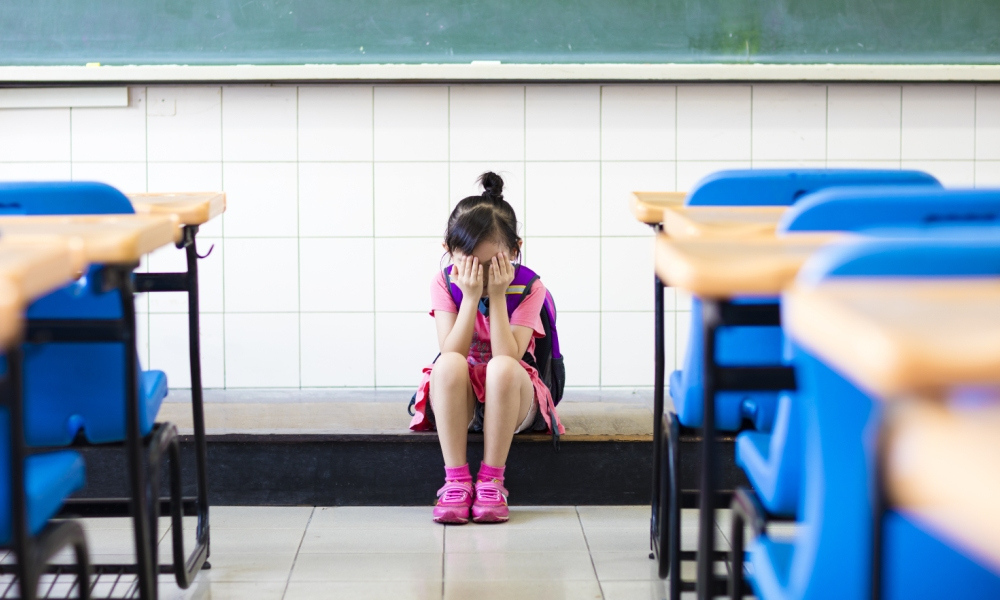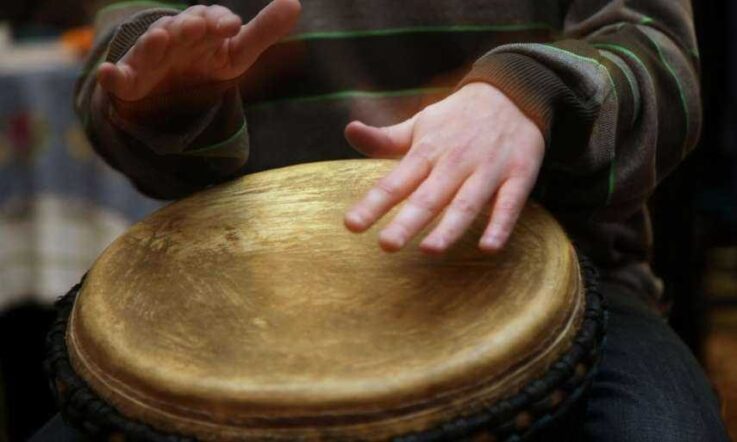Mollie Tobin outlines research from neuroscience, psychology and education to highlight new understandings in childhood trauma research, and explores how this can be applied in the classroom.
There is a misconception that children are more resilient than adults to the effects of trauma and will ‘outgrow' traumatic experiences (Lieberman & Knorr, 2007). However, new understandings in developmental and neuroscience research have challenged popular ideas about trauma and brain development during childhood. This research can help educators and other stakeholders better understand the broad influence that trauma exposure may have on child development, and to reflect on policy and practice when considering traumatised children in classrooms.
Childhood trauma
Childhood trauma is typically characterised by the experience, which includes the type and duration of trauma experienced, and the child's reaction to the experience, such that these experiences overwhelm a child's ability to cope and cause the child to feel extreme fear, helplessness or horror (American Psychological Association, 2008).
Studies show that trauma exposure in childhood is widespread (American Psychological Association, 2008; Finkelhor, Turner, Shattuck, Hamby, & Kracke, 2015), and unfortunately it is a common experience once children reach adolescence and adulthood (Anda, et al., 2006).
Research in psychology and education suggests that trauma is associated with poorer education outcomes, and that traumatised children use more school and system-level academic supports, have lower academic achievement, and higher rates of grade repetition and school drop-out (Duplechain, Reigner, & Packard, 2008; Perzow, et al., 2013).
New understandings
Developmental trauma research now argues that trauma exposure during childhood affects children's self-regulatory capacities by disrupting the normal functioning of the body and brain stress-response systems, which can affect emotional and cognitive functioning (Putnam, 2006).
Neuroscience research has underscored the understanding that the brain is the central system linking neurobiological and psychosocial development, which can explain how trauma exposure may help initiate a ‘cascade' of impaired functioning across seemingly unrelated pathways in childhood, adolescence and adulthood (DeGregorio, & McLean, 2013; Kearney, Wechsler, Kaur, & Lemos-Miller, 2010; Pechtel, & Pizzagalli, 2011).
In addition, neuroscience research has shifted the focus from a cognitive perspective of the child brain to a focus on the emotional development of the brain (Schore, 2015). Since environmental and relational experiences in childhood influence neurobiological development, childhood trauma exposure has the potential to become the organising system of the brain (Perry, 2009).
While trauma exposure includes many types of experiences, the child's body and brain stress-response systems are finite, so trauma will be physically ‘remembered' (Glaser, 2000; van der Kolk, 1994) by children as physical states and sensations in response to experiences in their environment.
Developments in neuroscience research have helped change understandings of how the brain develops during childhood and how physiological changes in response to stress can interact with children's neurodevelopment. Children's brains may be particularly susceptible to the timing and severity of trauma exposure as brain development in childhood is not linear (Pechtel, & Pizzagalli, 2011). This means that brain structures and processes have different timing and patterns of development. For example, some regions develop most during childhood, others during adolescence, and yet others into adulthood. This may help explain, in part, wide-ranging variation in subsequent emotional and cognitive functioning among children after trauma exposure.
Classroom application
In the classroom, children's trauma symptoms may be understood as attentional deficits, learning disabilities, or behavioural or conduct problems (Downey, 2007). Researchers like Teicher and colleagues (2003) argue that trauma-informed behaviours are important coping mechanisms that a child may develop to survive extremely stressful experiences, and that focusing on eliminating these behaviours may be damaging to the child. Therefore, it is important for educators working with traumatised children to understand the key developmental pathways that may be affected by childhood trauma, and how to support resilience through these pathways (Perkins, & Graham-Bermann, 2012).
Research has identified three areas where teachers and schools can focus attention to support traumatised children's needs:
- attachment – developing positive attachment to a teacher or mentor helps traumatised children normalise their disrupted body and brain stress-response systems, and to develop self-regulatory capacities (Dods, 2013; O'Neill, et al., 2010)
- competencies – teachers may provide traumatised children with opportunities to improve competencies and to develop a positive self-concept that may be unrelated to academic achievement, and
- self-regulation – different approaches to behaviour management in schools can help traumatised children learn to regulate their emotions and behaviour (Cole, Greenwald O'Brien, & Gadd, 2005; Gregorowski, & Seedat, 2013).
Many factors may cause trauma-informed behaviour, and teachers should not be afraid to try different behavioural management strategies to learn what is most effective for children in their classrooms (Australian Childhood Foundation, 2010).
A better understanding of the developmental pathways associated with trauma exposure may help stop trauma symptoms from being attributed to low ability or behavioural problems (Goodman, et al., 2012). Educators and schools already have many of the skills and resources to help traumatised children (Cole, et al., 2005), and can promote healthy development through a holistic focus on attachment, competencies and self-regulation.
This is a summary of Childhood trauma: Developmental pathways and implications for the classroom by Mollie Tobin, the final in a series of papers, Changing minds: Discussions in neuroscience, psychology and research, published by the Centre for Science of Learning @ ACER. Read the full paper at http://research.acer.edu.au/learning_processes/20
References
American Psychological Association. (2008). Children and trauma: Update for mental health professionals. Retrieved from www.apa.org/pi/families/resources/update.pdf
Anda, R.F., Felitti, V.J., Bremner, J.D., Walker, J.D., Whitfield, C., Perry, B.D., Dube, S.H., & Giles, W.H. (2006). The enduring effects of abuse and related adverse experiences in childhood. European Archives of Psychiatry and Clinical Neuroscience, 256(3), 174–186.
Australian Childhood Foundation. (2010). Making space for learning: Trauma informed practice in schools. Melbourne: Australian Childhood Foundation.
Cole, S., Greenwald O'Brien, J., & Gadd, M.G. (2005). Helping traumatized children learn: Supportive school environments for children traumatized by family violence. Boston: Massachusetts Advocates for Children.
DeGregorio, L.J., & McLean, S. (2013). The cognitive profiles of maltreated children in care and their educational needs: Supporting good outcomes. Children Australia, 38(1), 28–35.
Dods, J. (2013). Enhancing understanding of the nature of supportive school-based relationships for youth who have experienced trauma. Canadian Journal of Education/Revue canadienne de l'éducation, 36(1), 71–95.
Downey, L. (2007). Calmer classrooms: A guide to working with traumatised children. Melbourne: Child Safety Commissioner.
Duplechain, R., Reigner, R., & Packard, A. (2008). Striking differences: The impact of moderate and high trauma on reading achievement. Reading Psychology, 29(2), 117–136.
Finkelhor, S.D., Turner, H.A., Shattuck, A.M., Hamby, S.L., & Kracke, K. (2015). Children's exposure to violence, crime, and abuse: An update. Juvenile Justice Bulletin, 2015(Sept), 1–13.
Glaser, D. (2000). Child abuse and neglect and the brain—A review. Journal of Child Psychology and Psychiatry, 41(1), 97–116.
Goodman, R.D., Miller, M.D., & West-Olatunji, C.A. (2012). Traumatic stress, socioeconomic status, and academic achievement among primary school students. Psychological Trauma: Theory, Research, Practice, and Policy, 4(3), 252.
Gregorowski, C., & Seedat, S. (2013). Addressing childhood trauma in a developmental context. Journal of Child & Adolescent Mental Health, 25(2), 105–118.
Kearney, C.A., Wechsler, A., Kaur, H., & Lemos-Miller, A. (2010). Posttraumatic stress disorder in maltreated youth: A review of contemporary research and thought. Clinical Child and Family Psychology Review, 13(1), 46–76.
Lieberman, A.F., & Knorr, K. (2007). The impact of trauma: A developmental framework for infancy and early childhood. Pediatric Annals, 36(4), 209–215.
O'Neill, L., Guenette, F., & Kitchenham, A. (2010). ‘Am I safe here and do you like me?' Understanding complex trauma and attachment disruption in the classroom. British Journal of Special Education, 37(4), 190–197.
Pechtel, P., & Pizzagalli, D.A. (2011). Effects of early life stress on cognitive and affective function: An integrated review of human literature. Psychopharmacology, 214(1), 55–70.
Perkins, S., & Graham-Bermann, S. (2012). Violence exposure and the development of school-related functioning: Mental health, neurocognition, and learning. Aggression and Violent Behavior, 17(1), 89–98.
Perry, B.D. (2009). Examining child maltreatment through a neurodevelopmental lens: Clinical applications of the neurosequential model of therapeutics. Journal of Loss and Trauma, 14(4), 240–255.
Perzow, S.E., Petrenko, C.L., Garrido, E.F., Combs, M.D., Culhane, S.E., & Taussig, H.N. (2013). Dissociative symptoms and academic functioning in maltreated children: A preliminary study. Journal of Trauma & Dissociation, 14(3), 302–311.
Putnam, F.W. (2006). The impact of trauma on child development. Juvenile and Family Court Journal, 57(1), 1–11.
Schore, A.N. (2015). Plenary Address, Australian Childhood Foundation Conference Childhood Trauma: Understanding the basis of change and recovery early right brain regulation and the relational origins of emotional wellbeing. Children Australia, 40(2), 104–113.
Teicher, M.H., Andersen, S.L., Polcari, A., Anderson, C.M., Navalta, C.P., & Kim, D.M. (2003). The neurobiological consequences of early stress and childhood maltreatment. Neuroscience & Biobehavioral Reviews, 27(1), 33–44.
van der Kolk, B.A. (1994). The body keeps the score: Memory and the evolving psychobiology of posttraumatic stress. Harvard Review of Psychiatry, 1(5), 253–265.
Consider the behaviour management approach you adopt in your classroom. Does this encourage students to self-regulate their body and brain stress-response systems?
How often do you try different behaviour management strategies to learn what is most effective for children in your classroom?
In what ways do you seek to better understand the developmental pathways associated with trauma exposure? How does this assist you in the classroom?



